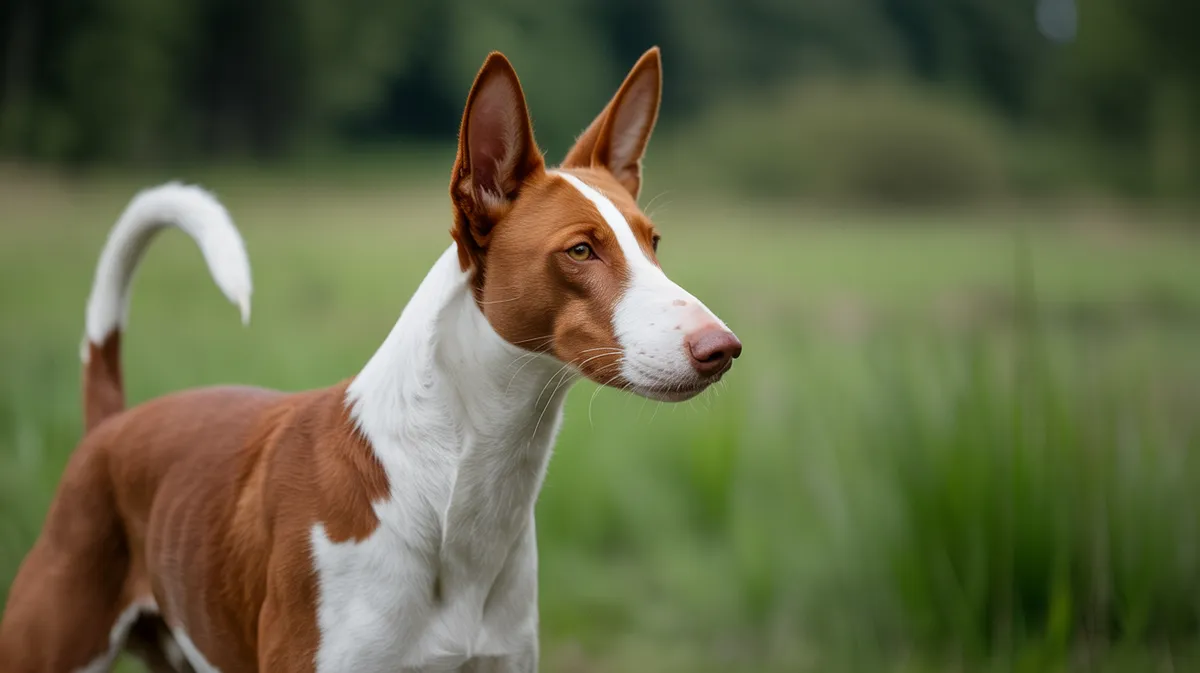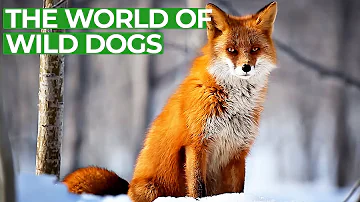
Ibizan Hound
Canis lupus familiaris

Meet the Ibizan Hound
The Ibizan Hound is an elegant, athletic breed known for its remarkable agility and keen hunting instincts. Originating from the Balearic Islands of Spain, this sighthound was traditionally used for rabbit hunting thanks to its sharp vision and impressive speed. It has a graceful, lean build, large upright ears, and a short or wire-haired coat, typically white or red. Ibizan Hounds are intelligent, friendly, and affectionate dogs that thrive on companionship and regular exercise.
Classification
Mammal
Habitat
Domestic; originally rural and island environments
Diet
Carnivore
Lifespan
11-14 years
Conservation
Least Concern
Weight
20-29 kg (44-64 lbs)
📖Fascinating Facts
Exceptional Jumpers
Ibizan Hounds are famous for their jumping ability and can clear fences of six feet or more without a running start.
Sensitive Senses
They have excellent hearing and sight, making them effective hunters of small game such as rabbits.
Ancient Heritage
Their ancestors were likely brought to the Balearic Islands by Phoenician traders over 3,000 years ago.
📋Detailed Description
The Ibizan Hound (Podenco Ibicenco) is a medium-to-large sighthound, typically standing 56–74 cm (22–29 in) at the shoulder and weighing 20–29 kg (44–64 lbs). Its physique is characterized by a long, narrow head, elongated neck, deep chest, and a tucked-up abdomen, all contributing to its exceptional agility and speed. The breed's most distinctive features are its large, upright, highly mobile ears and amber eyes, which give it an alert, expressive appearance. The Ibizan Hound comes in two coat varieties: smooth and wire-haired, both of which are weather-resistant and typically white, red, or a combination of both. Anatomically, the breed possesses long, powerful limbs and a flexible spine, allowing for impressive leaping ability—individuals have been documented clearing fences over 1.8 meters (6 feet) tall. Ibizan Hounds have a lean musculature and minimal body fat, reflecting their adaptation for endurance and swift pursuit of prey. Their sensory abilities are highly developed, with acute vision and hearing, enabling them to detect and track small game in low-light conditions. Socially, they are intelligent, sensitive, and form strong bonds with both humans and other dogs. In their native environment, they were traditionally kept in small packs, which facilitated cooperative hunting. The breed is known for its quiet demeanor indoors, but outdoors it exhibits high energy and a strong prey drive. Ibizan Hounds are generally long-lived, with an average lifespan of 12–14 years, and are considered robust with relatively few breed-specific health issues.
💡 Did you know?
Ibizan Hounds have a unique 'blushing' trait—when excited, their noses and ears can turn a rosy pink color.
🔬Research & Sources
Wikipedia Summary
The Ibizan Hound is a lean, agile dog of the hound family. There are two hair types of the breed: smooth and wire. The more commonly seen type is the smooth.
Last Modified: 5/28/2025
🎭Behavior & Social Structure
Ibizan Hounds display a unique blend of independence and sociability. In hunting contexts, they are renowned for their silent, methodical approach, using both sight and hearing to locate prey—primarily rabbits. Unlike many sighthounds, they will use their sense of smell to supplement tracking. When a rabbit is detected, the hound will freeze, then execute a sudden, explosive chase, often leaping over obstacles and using their agility to pursue prey through dense brush or rocky terrain. In a domestic setting, Ibizan Hounds are affectionate and gentle, especially with children, but may be reserved with strangers. They are highly intelligent and problem-solving, sometimes opening doors or gates to satisfy their curiosity. Daily routines typically include periods of rest interspersed with bursts of intense activity; they require substantial physical and mental stimulation to prevent boredom. Socially, they do well in groups and can be kept with other dogs, especially if raised together. They rarely bark excessively, but will vocalize to alert their owners to unusual occurrences.
👶Reproduction & Life Cycle
Ibizan Hounds reach sexual maturity between 10–14 months of age. The breed is generally monoestrous, with females coming into heat once or twice per year. Courtship involves ritualized play and mutual sniffing, with the male often displaying submissive behaviors. Gestation lasts approximately 63 days. Litter sizes typically range from 6 to 12 puppies. Puppies are born with their eyes closed and begin to open them at around 10–14 days. Parental care is primarily provided by the dam, though in pack settings, other females may assist in rearing. Puppies are weaned at 4–6 weeks and are highly active and exploratory by 8 weeks. Breeding is usually planned to avoid extremes of temperature, with most litters born in spring or early summer. Responsible breeders screen for hereditary conditions such as hip dysplasia and eye disorders.
🛡️Adaptations & Survival
The Ibizan Hound exhibits several adaptations for hunting in the rugged, arid landscapes of the Balearic Islands. Its elongated limbs and flexible spine enable high-speed pursuit and the ability to leap over obstacles, while its lean body minimizes heat retention. The large, upright ears enhance auditory acuity, allowing detection of faint rustling sounds from prey. The breed's keen eyesight is adapted for low-light conditions, facilitating dawn and dusk hunting. Their double coat (in wire-haired individuals) provides protection against thorns and harsh weather. Behaviorally, their independent problem-solving skills and cooperative pack hunting strategies increase hunting efficiency. The breed's low body fat and efficient metabolism are suited for endurance over long distances in search of prey.
📚Research Sources
🎨Cultural Significance
The Ibizan Hound holds a prominent place in the rural culture of Ibiza and the Balearic Islands, where it has been used for centuries as a rabbit hunter. The breed is believed to descend from ancient Egyptian hounds, as evidenced by its resemblance to dogs depicted in Pharaonic art, though genetic studies suggest a more recent Mediterranean origin. Locally, the hound is a symbol of traditional hunting and rural life, and its image appears in local folklore and iconography. In modern times, the breed is celebrated for its elegance and athleticism in dog shows and lure coursing events. The Ibizan Hound is sometimes associated with mythological themes of agility, vigilance, and loyalty.
🔬Recent Research & Discoveries
Recent genetic analyses (e.g., Parker et al., 2017) have clarified that, despite their ancient appearance, Ibizan Hounds are not direct descendants of Egyptian dogs but share ancestry with other Mediterranean sighthounds. Ongoing research focuses on the breed's unique leaping behavior and its biomechanical underpinnings, with studies examining muscle fiber composition and limb morphology. Veterinary studies have documented a generally low incidence of inherited diseases, though ongoing screening for hip dysplasia and autoimmune thyroiditis is recommended. Ethological research has highlighted the breed's complex social behaviors and adaptability to both pack and human family structures. Conservation efforts in Spain aim to preserve traditional bloodlines and hunting practices.
🎥Wildlife Videos

Wildlife - Just Wild Dogs | Free Documentary Nature
Wildlife - Episode 7: Just Wild Dogs | Wildlife Documentary Watch 'Wildlife - Episode 8' here: https://youtu.be/kglJpB4ei8o Run ...
Free Documentary - Nature

Secrets of the Outback | Wild Australia in 4K | Wildlife Nature Documentary
To many, Australia's Outback seems barren and inhospitable — a vast, sun-scorched wilderness with little life to offer. But look ...
Into the Wild Films

Wildlife - The Fascinating World of Wild Animals | Full Series | Free Documentary Nature
Wildlife - The Fascinating World of Wild Animals | Wildlife Documentary Watch 'Ocean Stories - Full Series' here: ...
Free Documentary - Nature

Wild Canada - Nature's Untamed Beauty | Full Series | Free Documentary Nature
Wild Canada - Nature's Untamed Beauty | Wildlife Documentary Watch 'Darkwoods - Canada's Hidden Nature Reserve' here: ...
Free Documentary - Nature

The Gorgeous Wildlife of the Mediterranean | Free Documentary Nature
The Gorgeous Wildlife of the Mediterranean | Wildlife Documentary Watch 'Wildlife Instincts: Survival Techniques - Iguana vs.
Free Documentary - Nature

3 Hours of The Untold Stories of British Wildlife | Our World
A wildlife documentary series, narrated by Hugh Bonneville, uncovering the hidden lives of animals across diverse habitats ...
Our World
🌍Habitat Information
The Ibizan Hound typically inhabits Domestic; originally rural and island environments environments. Ibizan Hounds have adapted to their environments with specialized features and behaviors.
Primary Habitat:
Domestic; originally rural and island environments
More detailed habitat information will be available soon.
🛡️Conservation Status
The Ibizan Hound is currently classified as Least Concern. Conservation efforts are crucial for preserving this species for future generations.
Common Threats:
- 🏠Habitat loss and fragmentation
- 🌡️Climate change impacts
- 🎯Hunting and poaching
- 🏭Human-wildlife conflict
⚠️Threats & Conservation Challenges
While the Ibizan Hound is not considered at risk globally, traditional populations in the Balearic Islands face challenges from declining rural hunting practices, habitat loss, and genetic dilution from crossbreeding. Urbanization and changing land use have reduced the availability of open hunting grounds. In some regions, the breed's rarity has led to concerns about maintaining genetic diversity. Internationally, the breed is maintained primarily by enthusiasts and breeders, with population numbers stable but relatively low. There are no major health crises affecting the breed, but vigilance is required to prevent inherited disorders from becoming prevalent.
🔬Scientific Classification
Scientific Name
Canis lupus familiaris
Classification Hierarchy
🔍 About Taxonomic Classification
Taxonomic classification is a hierarchical system used by scientists to classify and organize living organisms based on shared characteristics and evolutionary relationships.
The system moves from broad categories (Kingdom) to increasingly specific ones, with each animal's scientific name typically consisting of its Genus and species.
📝Community Notes
Share your observations and insights about the Ibizan Hound with our community of wildlife enthusiasts.
Join Our Community
Sign in to share your observations and connect with fellow wildlife enthusiasts.
Sign In to ContributeNo community notes yet
Be the first to share your observations about the Ibizan Hound!
Explore Ibizan Hound
Select a tab above to learn more about this amazing animal.
📸Photo Gallery
No photos available for this animal yet.
🌟Discover More Wildlife
Continue your journey of discovery with more fascinating animals from our database
